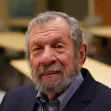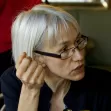Exclusives
BLOG POST
California IT Strategic Plan - I Stand Corrected
<img src="http://www.cio.ca.gov/images/ClarkKelso-www2.jpg" alt="Clark Kelso" align="right" />Clark Kelso, California's Chief Information Officer, was kind enough to respond to my recent post, <a href="http://www.planetizen.com/tech/archives/2005/10/18/326/ ">California Updates State IT Strategic Plan</a>, commenting on the state's new strategic plan and what I perceived to be a lack of focus on making technology accessible to people with disabilities.<br /> <br /> Clark writes:<br /> <br /> <blockquote>...I am pleased to see that our planning activities are being followed so closely in the trade press.<br /> <br /> The last paragraph in your article suggests we may not be paying sufficient attention to Section 508 issues in our web developments. Although we did not cite Section 508 in the strategic plan, accessibility is the very heart of our efforts. As your article notes,<br /> the very first goal of the plan is to "Make government services more accessible to citizens and State clients." That concept of accessibility includes not only opening up new, technology-enabled vehicles for delivering services, information and benefits, but the goal of ensuring that those vehicles -- as well as all existing vehicles -- are ADA accessible and compliant.<br /> <br /> Our Portal Steering Committee, which was only recently created and is just starting to warm up to the topic, has already expressly recognized ADA compliance as a required component of the State's web presence. The following link plainly identifies ADA accessibility and compliance as a necessary aspect of the user interface: <br /> <a href="http://www.cio.ca.gov/PDFs/Portal_Committee-040805.pdf">http://www.cio.ca.gov/PDFs/Portal_Committee-040805.pdf</a> (PDF, 100KB) <br /> <br /> The State's web pages are NOT always appropriately accessible, but this is most certainly an issue that we take seriously at the highest planning levels, and we encourage all departments to make accessibility a high priority. </blockquote>
FEATURE
Ten Common Sense Rules For TOD
What are the necessary ingredients for successful Transit Oriented Development (TOD)? Bruce Liedstrand, Planner for Liedstrand Associates, lists the ten fundamental, common-sense elements of TOD.
BLOG POST
Funny Employment Queries
So we're hiring for two new positions at Urban Insight (the company that supports Planetizen). We're hiring a <a href="http://www.planetizen.com/jobs/item.php?id=4126">Web Designer/Developer</a> (with preference given to candidates with backgrounds in planning), and a <a href="http://www.planetizen.com/jobs/item.php?id=4174">Web Developer / Programmer</a>. <br /> <br /> I published the job announcements to several lists and also on a few online services that I've had success with in the past. I've received a fair number of responses, and, thank goodness, and several highly-qualified candidates (although not so many with backgrounds in planning/architecture/urban esign).
BLOG POST
California Updates State IT Strategic Plan
<img src='http://www.planetizen.com/tech/files//20051017castrategicplan.jpg' alt='California State Information Technology Strategic Plan' align='right' />While not strictly relevant to planning, it's always interesting to compare plans prepared by planners with plans prepared by other branches of government, in this case the California CIO and the IT Council Strategic Plan Committee have prepared the new <a href="http://www.cio.ca.gov/PDFs/101405_ITStrategicPlanUpdate.pdf">California State Information Technology Strategic Plan</a> (PDF, 220KB)<br /> <br /> The plan lists six impressive strategic goals:<br /> <br /> <li>Make Government services more accessible to citizens and State clients.<br /> </li>
FEATURE
URISA 2005 Annual Conference Photos
Spatial information professionals gather at the 43rd Annual Conference of the Urban and Regional Information Systems Association being held in Kansas City, MO.
FEATURE
Our Own Private Idahos
BLOG POST
Building Websites For Nonprofits With Open Source Content Management Frameworks
<img src="http://66.28.40.163/images/NTEN/RegConfLogos/Logo_NTEN_Conferences.gif" align="right" alt="NTEN Conference Logo" />Abhijeet presented last week at the <a href="http://www.nten.org/">Nonprofit Technology Enterprise Network</a> (NTEC) 2005 San Diego Regional Conference on open source content management frameworks for building websites for nonprofit. He published his fabulous presentation online under a creative commons license:<br /> <br /> <a href="http://www.urbaninsight.com/~chavan/2005/nten/">Building Websites For Nonprofits With Open Source Content Management Frameworks</a><br /> <br /> He really knows what he's presenting on, since much of his presentation is based on his hands-on experience with a massive project we just completed here at Urban Insight.
BLOG POST
Community Billboards
When recently working in a distressed community in Philadelphia, we were thinking of the best ways to communicate what we were planning for the area and guide residents toward local resources that exist but are rarely used. As a cost effective solution, we worked with the <a href="http://www.klip.tv">Klip Collective</a> to implement a video installation within a vacant storefront. The installation runs every evening. Besides providing some valuable information, we used the installation to instill some street activity along what was once an active commercial corridor.
BLOG POST
Why Open Source? Ask Massachusetts
<img src='http://www.planetizen.com/tech/files/20050922openoffice.png' alt='OpenOffice' align="right"/><br /> <br /> Open source is not just about lowering costs. It's about staying in control of your own data. For governments, it is important to specify open file formats for storing public data. Eric Kriss, Massachussets' secretary of administration and finance asks an important question about long-term archiving of public documents created with Microsoft Office. "Will those documents still be legible 10 years from now, or in 50?" The state of Massachusetts has given some thought to that question and is taking action.
BLOG POST
Mambo is dead…
…here comes Joomla. There was a lot of uncertainty about the future of the Content Management System Mambo over the past months. Finally the Developers now left Mambo and started Joomla.<br /> <br /> As <a href="http://www.eweek.com/article2/0,1895,1851367,00.asp">this article in eWeek</a> points out, "the original owners [Miro], wanted to regain control of the project. The developers, realizing that they were being cut out of executive management, decided to take the code and run…â€<br /> <br /> The outcomes might describe the state of open source today.
FEATURE
Recovering New Orleans
FEATURE
Book Review - 'Dream City: Vancouver and the Global Imagination'
Bob Ransford reviews the magical and often paradoxical relationship Vancouver shares with its natural surroundings as described in Lance Berelowitz's Dream City: Vancouver and the Global Imagination.
FEATURE
Greening of the Campus VI Conference
Can a campus community become a "green" model for society as a whole? Educators, students, and professionals meet at an interdisciplinary conference to promote sustainability in education, research, operations and affiliated service organizations.
BLOG POST
Dead Cities, part 2
Joel Garreau weighed in yesterday on whether New Orleans should (or can) be rebuilt. He's always smart and readable; if you haven't read <a href="http://www.amazon.com/exec/obidos/tg/detail/-/0385262493/qid=1126558443/sr=8-2/ref=pd_bbs_2/002-4208330-1388856?v=glance&s=books&n=507846"><em>Edge City</em></a> you should go get it. It's a brilliant, well-reported take on urban theory and how cities are changing. Anyway, <a href="http://www.washingtonpost.com/wp-dyn/content/article/2005/09/09/AR2005090902448_pf.html">here</a>
FEATURE
Planning for the Unplanned
BLOG POST
Tragedy and Technology
A Los Angeles Times article titled "<a href="http://www.latimes.com/news/printedition/la-fi-internet10sep10,1,1004073.story?ctrack=1&cset=true">Web Proves Its Capacity to Help in Time of Need</a>" documents the importance of the Web as a communications medium. <br /> <br /> <blockquote><br /> It reunited families and connected them with shelter. It turned amateur photographers into chroniclers of history and ordinary people into pundits. It allowed television stations to keep broadcasting and newspapers to keep publishing. It relayed heartbreaking tales of loss and intimate moments of triumph...<br /> <br /> The Internet has played a larger and larger role in every major news event of the last 10 years...In the aftermath of Katrina, use of the Internet is more vital and varied than ever.<br /> </blockquote>
Pagination
Heyer Gruel & Associates PA
JM Goldson LLC
Custer County Colorado
City of Camden Redevelopment Agency
City of Astoria
Transportation Research & Education Center (TREC) at Portland State University
Camden Redevelopment Agency
City of Claremont
Municipality of Princeton (NJ)
Urban Design for Planners 1: Software Tools
This six-course series explores essential urban design concepts using open source software and equips planners with the tools they need to participate fully in the urban design process.
Planning for Universal Design
Learn the tools for implementing Universal Design in planning regulations.


































